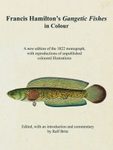Call us (08:30-17:00 UK)
01803 865913International
+44 1803 865913Need Help?
Help pagesWildlife Survey & Monitoring
Field Guides & Natural History
Academic & Professional Books
- Evolutionary Biology
- Evolution
- Human Evolution & Anthropology
- Cladistics, Phylogeny & Taxonomy
- View All
British Wildlife
British Wildlife is the leading natural history magazine in the UK, providing essential reading for both enthusiast and professional naturalists and wildlife conservationists. Published eight times a year, British Wildlife bridges the gap between popular writing and scientific literature through a combination of long-form articles, regular columns and reports, book reviews and letters.
Conservation Land Management
Conservation Land Management (CLM) is a quarterly magazine that is widely regarded as essential reading for all who are involved in land management for nature conservation, across the British Isles. CLM includes long-form articles, events listings, publication reviews, new product information and updates, reports of conferences and letters.





![Ictiofauna Marina: Manual de Identificación de los Peces Marinos de la Península Ibérica y Baleares [Marine Ichthyofauna: Identification Guide to the Marine Fish of the Iberian Peninsula and the Balearics] Ictiofauna Marina: Manual de Identificación de los Peces Marinos de la Península Ibérica y Baleares [Marine Ichthyofauna: Identification Guide to the Marine Fish of the Iberian Peninsula and the Balearics]](http://mediacdn.nhbs.com/jackets/jackets_resizer_xlarge/22/225496.jpg?height=620)
![Ictiofauna Marina: Manual de Identificación de los Peces Marinos de la Península Ibérica y Baleares [Marine Ichthyofauna: Identification Guide to the Marine Fish of the Iberian Peninsula and the Balearics]](http://mediacdn.nhbs.com/jackets/jackets_resizer/22/225496.jpg)
![Ictiofauna Marina: Manual de Identificación de los Peces Marinos de la Península Ibérica y Baleares [Marine Ichthyofauna: Identification Guide to the Marine Fish of the Iberian Peninsula and the Balearics]](http://mediacdn.nhbs.com/jackets/jackets_resizer/22/225496_1.jpg)
![Ictiofauna Marina: Manual de Identificación de los Peces Marinos de la Península Ibérica y Baleares [Marine Ichthyofauna: Identification Guide to the Marine Fish of the Iberian Peninsula and the Balearics]](http://mediacdn.nhbs.com/jackets/jackets_resizer/22/225496_2.jpg)
![Ictiofauna Marina: Manual de Identificación de los Peces Marinos de la Península Ibérica y Baleares [Marine Ichthyofauna: Identification Guide to the Marine Fish of the Iberian Peninsula and the Balearics]](http://mediacdn.nhbs.com/jackets/jackets_resizer/22/225496_3.jpg)
![Ictiofauna Marina: Manual de Identificación de los Peces Marinos de la Península Ibérica y Baleares [Marine Ichthyofauna: Identification Guide to the Marine Fish of the Iberian Peninsula and the Balearics]](http://mediacdn.nhbs.com/jackets/jackets_resizer/22/225496_4.jpg)
![Ictiofauna Marina: Manual de Identificación de los Peces Marinos de la Península Ibérica y Baleares [Marine Ichthyofauna: Identification Guide to the Marine Fish of the Iberian Peninsula and the Balearics]](http://mediacdn.nhbs.com/jackets/jackets_resizer/22/225496_5.jpg)
![Ictiofauna Marina: Manual de Identificación de los Peces Marinos de la Península Ibérica y Baleares [Marine Ichthyofauna: Identification Guide to the Marine Fish of the Iberian Peninsula and the Balearics]](http://mediacdn.nhbs.com/jackets/jackets_resizer/22/225496_6.jpg)
















![Anfibios y Reptiles de la Peninsula Iberica, Baleares y Canarias [ Amphibians and Reptiles of the Iberian Peninsula, the Balearics and the Canary Islands]](http://mediacdn.nhbs.com/jackets/jackets_resizer_medium/19/195508.jpg?height=150&width=99)
![Identificación en Vuelo de Aves Rapaces de Europa, África del Norte y Oriente Medio [Flight Identification of Raptors of Europe, North Africa and the Middle East]](http://mediacdn.nhbs.com/jackets/jackets_resizer_medium/23/230097.jpg?height=150&width=107)
![Guía de Aves: La Guía Más Completa de Aves de Europa y la Región Mediterránea [Collins Bird Guide: The Most Complete Guide to the Birds of Britain and Europe]](http://mediacdn.nhbs.com/jackets/jackets_resizer_medium/26/260572.jpg?height=150&width=104)
![Plantas Méliferas: Reconocer e Identificar 220 Plantas Méliferas [Melliferous Plants: Recognizing and Identifying 220 Honey-Producing Plants]](http://mediacdn.nhbs.com/jackets/jackets_resizer_medium/24/247879.jpg?height=150&width=103)
![Guía de las Macroalgas y Fanerógamas Marinas del Mediterráneo Occidental [Algae and Phanerogams of the Mediterranean]](http://mediacdn.nhbs.com/jackets/jackets_resizer_medium/20/207818.jpg?height=150&width=95)
![Caracoles y Babosas de la Península Ibérica y Baleares [Snails and Slugs of the Iberian Peninsula and the Balearic Islands]](http://mediacdn.nhbs.com/jackets/jackets_resizer_medium/23/231178.jpg?height=150&width=106)
![Guía de Campo de las Tortugas del Mundo [Field Guide to the Turtles of the World]](http://mediacdn.nhbs.com/jackets/jackets_resizer_medium/24/247880.jpg?height=150&width=112)
![Guía de Rapaces Nocturnas de Europa [Guide to the Nocturnal Raptors of Europe]](http://mediacdn.nhbs.com/jackets/jackets_resizer_medium/25/255228.jpg?height=150&width=104)